Norbert Bus, a Hungarian skipper of a whale watching boat, wants to know what happens if his ship sails over a human in the Arctic Ocean. What the legal consequences of such a tragedy would be, more precisely.
“Who will be held responsible? Will I be held responsible?” he asks at a meeting in Skjervøy, a remote town of fewer than 2,500 in northern Norway. Whale watching is relatively new to Skjervøy, growing from no industry operators to, this afternoon, a packed town hall of people — tour operators, guides, police, coast guard, municipal officials and the mayor. The regional director for tourism, Georg Sichelschmidt, greets everyone in English to reach non-Norwegian companies and crew members. He utters his surprise as he looks across the room: “I didn’t know this many companies would show up.”
The scene begs to be described with the phrase “like canned sardines,” since that kind of small silvery fish was precisely behind the chaos that prompted this gathering: a few years ago, herring emigrated to Skjervøy waters, whales followed and then humans followed both species, for different purposes.
The story begins some 100 kilometres, as a seabird flies, to the southwest of this meeting place, in Tromsø, the largest city in northern Norway. In 2011, the herring arrived in Tromsø waters, with hundreds of humpbacks and killer whales on their heels. This, too, came as a surprise to tourism officials. Despite having a coastline of twisting land that stretches the equivalent of 70 per cent of Earth’s circumference, Norway had just one whale watching destination at the time and few rules holding back the luxury yachts, catamarans, old fishing vessels, kayaks, foreign schooners, research boats, speedy rigid inflatable boats and even swimmers heading toward the whales on any given day.
The town hall meeting is an effort to change the whale watching culture in Norway. Skipper Bus, who drives a rigid inflatable boat, doesn’t get a clear-cut answer to his question about legal consequences. He’s also not asked to clarify why he is concerned about sailing over someone at latitude 70 degrees north — 386 kilometres above the Arctic Circle — where too much boat traffic, let alone random sea swimmers, is rarely a problem. But every other boat skipper in attendance probably has the same concern.
A week earlier, at the beginning of the 2021 whale watching season, an alarming Facebook post of around 120 tourists mobbing 70 to 80 killer whales and a lone humpback galvanized the community: some of the tourists were snorkeling, and boats — cutting in front of whales and other boats — were competing for views and access to the spectacular site of whales feeding on herring. But no one was officially chastised that day.
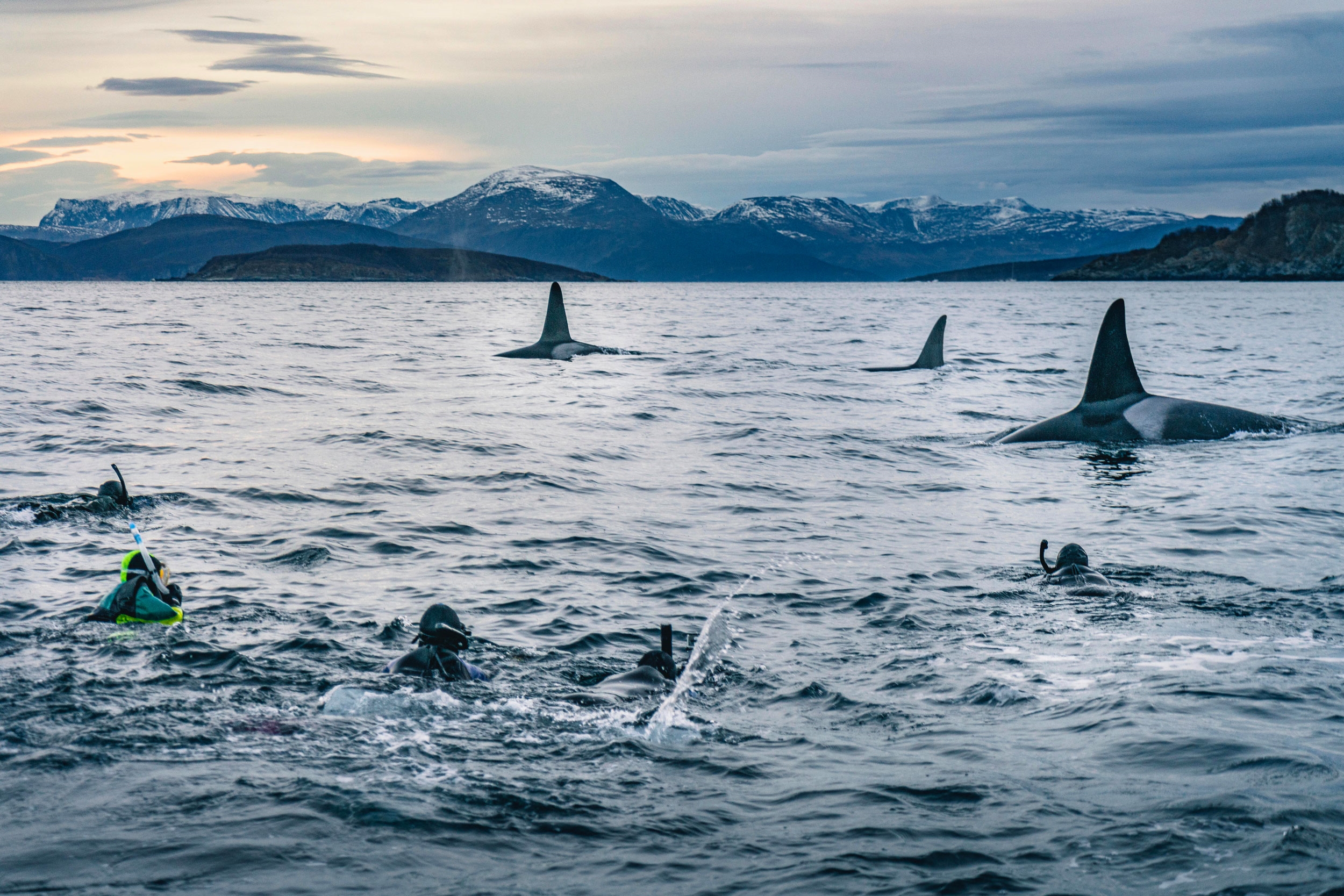
At the time of this incident, in Norway, boats could follow whales for the best possible sighting. In some other countries, that’s a no-no with repercussions: in Canada, for example, the same behaviour might result in a C$12,000 fine. In general, however, whale watching rules the world over are inconsistent. A whale might call them capricious. In the Azores, off Portugal, past which some of the humpbacks in Tromsø migrate, the number of whale-watching boats allowed at sea is strictly limited by a licence system. In Iceland, as in Norway, all you need is a licensed seaworthy ship and skipper, preferably sober, to join the crowd.
As for swimming with the whales? The attitude in Norway as well as in Australia, Dominican Republic and many of the other 120 or so whale watching destinations is, Sure, why not? But in the United States, the birthplace of the whale watching industry, it’s forbidden.
Whales are global residents, migrating longer distances than any other mammal, both for food and mating. Since industrial whaling days, they’ve been at the mercy of our imaginations, pinballing in our thoughts from dangerous beasts that can sink a ship to their current status as oceanic show dogs. We no longer hunt them, mostly, but we still view them through a transactional lens: they are moneymakers. So, we butt into their space, sometimes aggressively, sometimes with a modicum of respect, but mostly dumb about cetacean boundaries. The Wild West vibe playing out in Tromsø and Skjervøy is a cautionary tale for the whale watching industry worldwide if it wants to avoid a grisly end. No wonder Skipper Bus is worried.
Fat wallets and local jobs
When I arrive in the Arctic city of Tromsø, it’s lit by the holiday ferris wheel situated in a harbour square, circling in the air between the Radisson hotel and a ferry terminal the size of a modest train station. The winter day fades in and out as if controlled with a dimmer switch; about three hours of twilight beams from far away and fades to black around 1:00 p.m. Even for me, arriving from northern Iceland, the darkness is confusing; an hour after sunset, at 2:00 p.m., I’m already thinking about what to have for dinner.
Well, the answer is probably fish.
Located mostly on the small island of Tromsøya, Tromsø is home to one of Norway’s biggest fishing ports and one-seventh of the Norwegian Arctic population, some 68,000 people with around 41,000 of them inhabiting an area the same size as Manhattan. The city spills over to Norway’s mainland via a kilometre-long bridge. Old houses line the main shopping street — selling the expected and unexpected, everything from wool mittens to plastic trolls. Some of these buildings echo an era 200 years ago when the hunting of Greenland shark fuelled both the street lights and the economy. Today, Tromsø’s lights are electrically fuelled and the economy has diversified: in the last few decades, UiT, the Arctic University of Norway, has become a powerhouse in Arctic research, and tourists have become mad about the North.
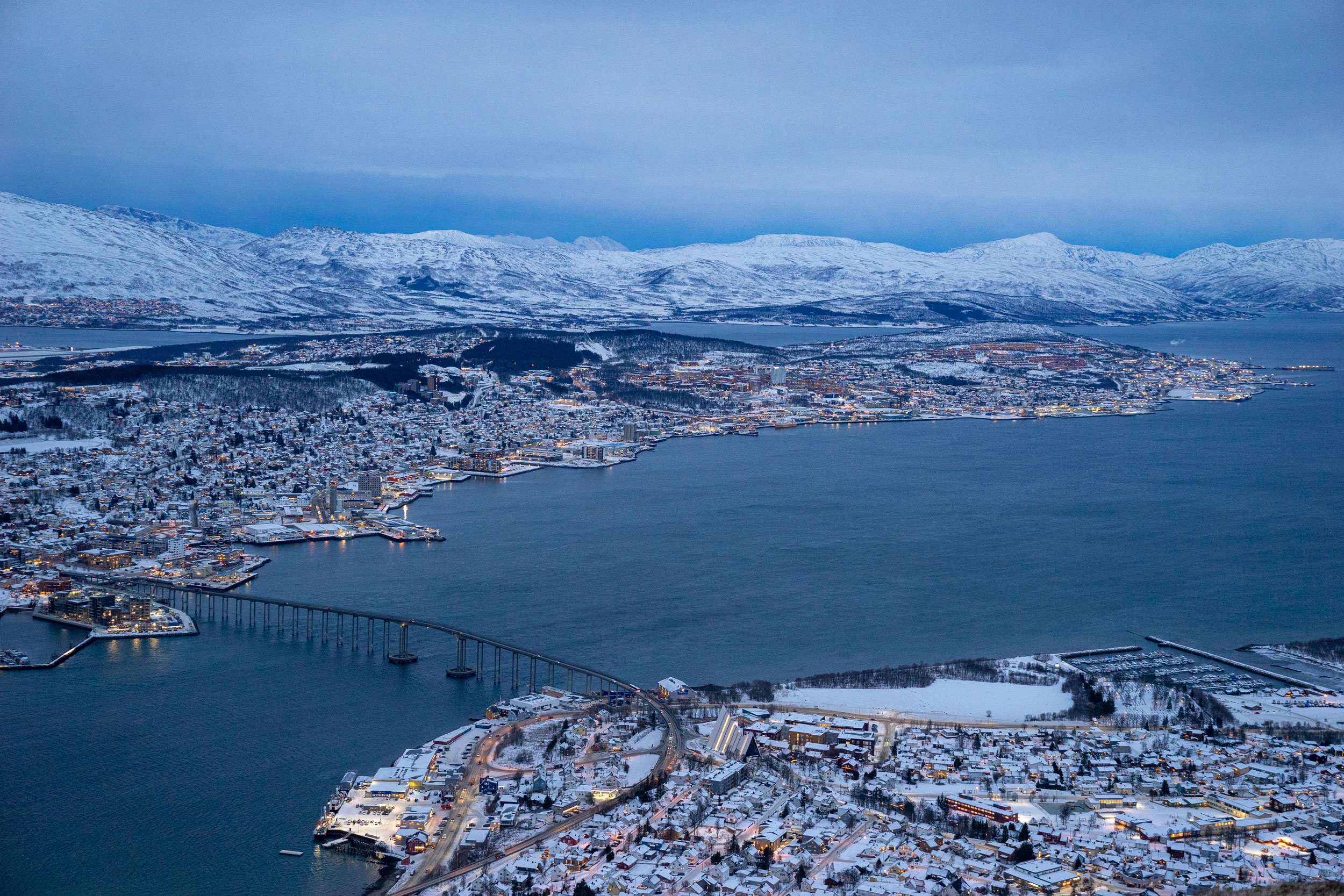
As remote as the city is, its geography has been its economic trump card. In 2007, Norwegian Air Shuttle began betting on the town as a winter destination. Among the first to arrive was a BBC film crew from London, led by the beloved British actor Joanna Lumley on a quest to see the northern lights. The hour-long documentary Joanna Lumley in the Land of the Northern Lights ran as a prime-time advertisement for Tromsø’s silent fjords lit up by spectacular streaks of colour. “I can die happy now,” Lumley said in 2008, echoing the then-growing hype of bucket list experiences in travels and tourism.
Three years later, on a winter day we can assume was cold, Norwegian fishers witnessed Kaldfjorden, the shoe-shaped fjord neighbouring Tromsø, fill with herring. The Norwegian spring-spawning herring — the world’s largest herring stock — are peripatetic, wandering the northeast Atlantic with no respect for the human desire for economic predictability. The stock matures in the Barents Sea, spawns on the Norwegian coastline and gathers in schools containing as many as three billion individuals, and then will overwinter in the same area for several seasons, until — unpredictably — they move on.
In November 2011, Kaldfjorden, a 15-minute drive from Tromsø, became the herring stock’s new favourite. Bigger fish followed the herring — cod, pollock, haddock — along with birds, seals and, yes, the whales.
“Before the herring, locals had not seen whales around here,” says Lone Helle, managing director of the marketing agency Visit Tromsø!, adding: “Whale watching added another layer to the winter experience.” As if the aurora borealis was not enough, the tourism gods bestowed whales upon the fjords. Visit Tromsø! cannot say with much certainty how many people — tourists or locals — went whale watching in the first years because practically anyone with a nautical licence could offer trips.
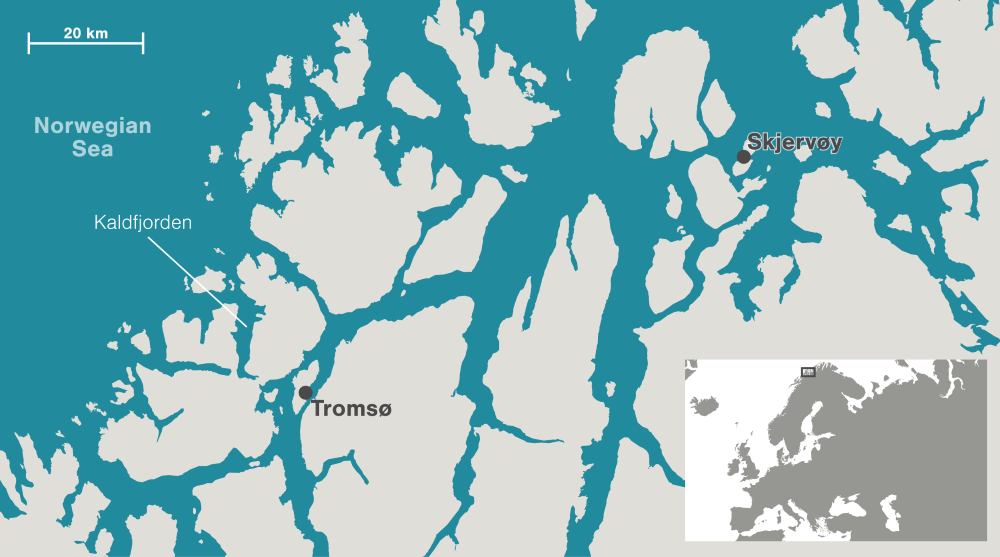
One attempt to assess the growth — made by business professor Giovanna Bertella at UiT — involved counting the promotional brochures published by different operators. Five, at first. Although on weekends, fishermen and other local boat owners on excursions with family and friends also crowded the water. Then word spread. Live-aboard cruises, large and small, arrived. Non-Norwegian whale watching companies, some with an idle fleet that time of year and attracted by the lack of regulations, tried with varying degrees of luck to enter the market. Facebook fuelled the tourist interest, and “Instagram was coming of age around the same time,” Bertella says. Some of the amazing viral photographs posted were taken underwater with scuba gear having flowed in with the boats.
Reports state that by 2016, over 34 tour operators had emerged. That made Kaldfjorden, unfortunately, ripe for whale watching malfeasance.
As guides say, no wildlife tour is the same — nature is wild and unpredictable after all — but no country is the same either.
In Iceland, where I worked as a whale watching guide for several summers, the activity largely takes place over the bright summer months and in wide bays across the country — the reverse of Tromsø’s dark days and narrow fjords. In northern Norway, the entire scene can fit into a single photo with steep mountains on either side and within a limited time frame, those precious hours of winter sun. In the absence of rules, the geography invited both chaos and great expectations.
Frédéric Gendron, a 39-year-old Frenchman, has been working on and off in Tromsø since 2016. He has witnessed the crowds and experienced how a lot of whales in a tight spot can influence the behaviour of tour guides and tourists.
“Usually, a whale watching tour builds up excitement with searching and waiting. On the Kaldfjorden tours, passengers often spotted the first whale just off the dock. It was very hard to sustain two hours of excitement,” Gendron says. The Kaldfjorden tours were almost unbearably good, violating the first rule of show business: always leave them wanting more. “Boats had to get closer and closer just to kill time,” he says, all the while trying to avoid a collision with other ships, kayakers and swimmers. After a couple of hours, tourists grew cold and bored, and if on a bigger boat, they would head to the saloon while the crew stayed outside to watch the whales. In Skjervøy, however, with people spending four hours anticipating the whales as they boated from Tromsø, the vibe would shift: passengers desperate with the passing time to see whales.
For the whales’ sake, Tromsø and its environs need to hit a reset button on the industry. But watching fat wallets and local jobs purposefully contract is hard to do. It’s a lot easier to watch money and livelihoods spontaneously erupt like a breaching humpback, metaphorically splashing cash around a seaside community.
How to not love whales to death
Nature-based tourism is the fastest-growing segment of tourism, according to the World Bank. By the latest estimates, from 2017, possibly over 15 million people a year pay to see whales. The growth of the industry makes sense.
As show business goes, whale watching is usually a brilliant model: the star of the show performs for free, although unreliably, and the audiences are often urban landlubbers with no price awareness when it comes to nautical operations.
When I worked as a whale watching guide, we needed four and a half passengers to break even (excluding maintenance and overhead costs). The number of people we usually had on board? Forty. With long summer days favouring three tours a day, profit added up quickly. Chasing whales to Skjervøy, however, has led to more of a financial burden — fuel and provisions — and the number of passengers needed to break even in this remote area probably approaches 30 to 40. But business is robust, as evidenced by the turnout at the meeting.
Among the 90 or so species of whales, dolphins and porpoises living in the wild, the most monetarily appreciated whale and the one that draws the biggest crowds is the humpback. Humpbacks are engaging characters who know how to sing, wave their flukes and flap the longest flippers in the animal kingdom. Though not the slowest of whales, they dawdle enough for a boat to catch up, and they conveniently rise to the surface to breathe every 10 or 15 minutes.
In Iceland, the company I worked for had brochures featuring a humpback breaching above water, a sight occurring maybe once out of 100 tours, but the sight is so magical tourists will tip generously when it happens, as if the guide conjured the whale out of the water, offering an unexpected gift of joy. Another tip-friendly tour is spotting a blue whale close enough to see the blue-gray hue of the skin. But on the remaining 99 per cent of trips, the definition of success is relative to expectations.
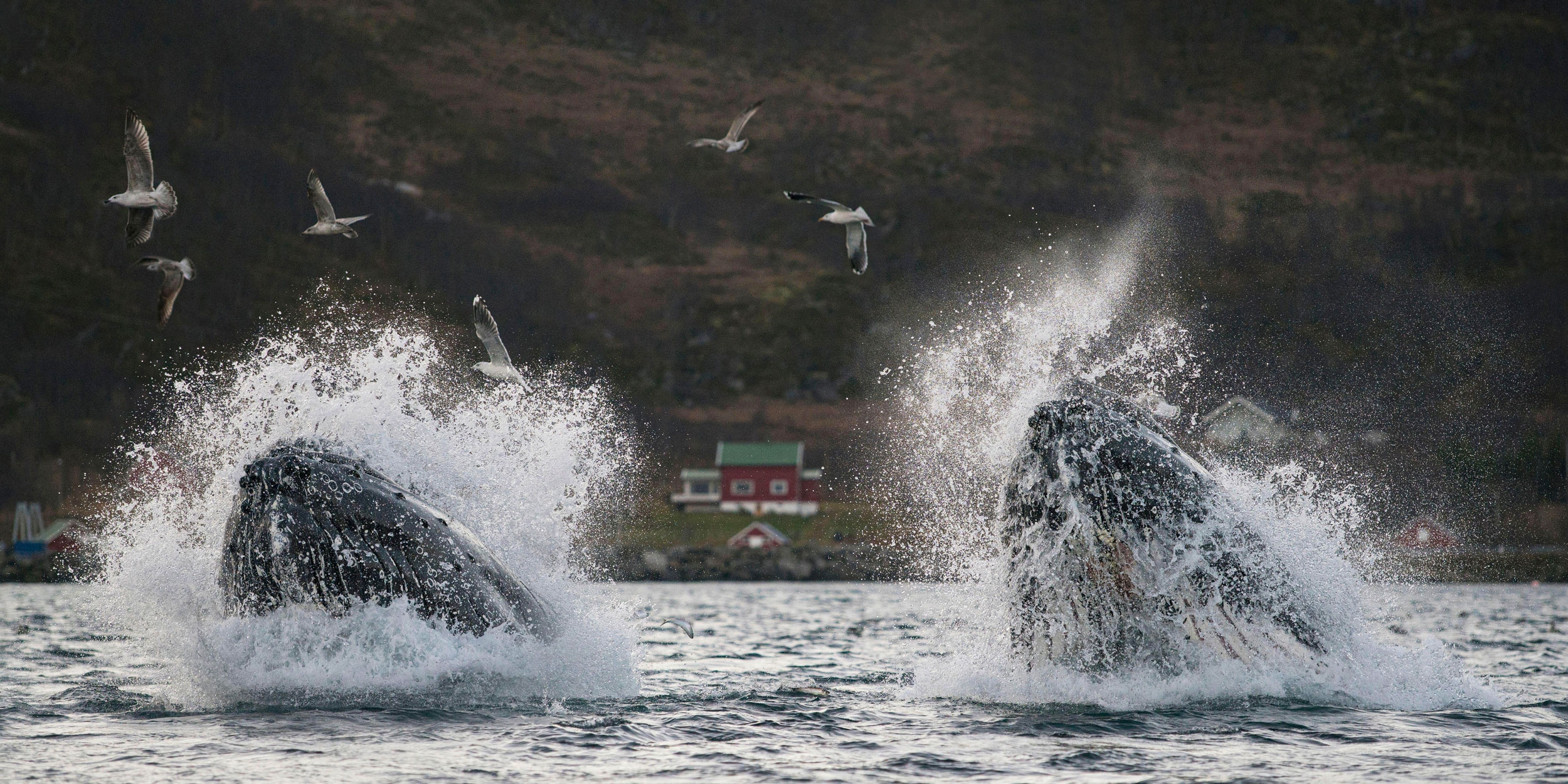
Most people probably understand that a brochure with a photograph of a breaching humpback is mainly advertising. But they may hesitate to book a tour if the brochure’s front page features a fluke taken with a 35-millimetre lens from a 100-metre distance, even though that’s what a whale watcher typically sees, for good reason. Boat skippers generally try to keep that distance — either because it’s a regulation or it’s a guideline embraced by tour operators — based on a principle established probably decades ago, though its exact origin is murky. The International Whaling Commission, an intergovernmental body mostly concerned with the protection of whales, despite having a name more aligned with slaughter, endorses flexible distance rules as part of its approach guidelines.
All 88 member states of the International Whaling Commission, except Norway and Iceland, are committed to a moratorium on commercial whaling. Could the commission extend its concern to the treatment of whales for other commercial gains? Robert Suydam, chairman of a subcommittee on whale watching within the prestigious Scientific Committee at the International Whaling Commission, is skeptical, speaking over the phone from his office in Anchorage, Alaska. “The Whaling Commission would have to change its conventions and the rules that it operates by,” he says. In the meantime, he adds, the commission can only make sure whales are not “loved to death” by providing guidelines based on the latest of research.
In the United States, Canada, Australia and New Zealand, variations of the codes of conduct are law and violators regularly face thousands of dollars in fines if those laws are violated. Elsewhere, the laws may exist without serious policing. In 2019, after another chaotic year in Skjervøy, the Norwegian Directorate of Fisheries moved toward a penalty system with a new rule: “It is forbidden to practice whale watching in a way that contributes to the whales being disturbed in their natural habitat.” A year later, disturbance suddenly had no ambiguity when the directorate introduced another rule: whale watching boats must keep a 370-metre distance from active fishing boats, which compete with whales for herring. Nor can anyone swim, dive or paddle within 740 metres of an active fishing boat. (For comparison, the standard soccer field is 105 metres.)
In August 2022, the local court in Tromsø prosecuted a skipper leading tourists on a hvalsafari — a whale watching safari — for sailing his vessel within 142 metres of a fishing boat actively fishing, according to the newspaper Nordlys. The skipper, fined around US$1,800, claimed the fishing vessel was idle. The court also fined the company around $3,600. But to date, Norway’s Directorate of Fisheries has fined no boat for actually disturbing whales in northern Norway, perhaps since by a scientific definition all boats disturb whales. Even if following current codes of conduct, is any whale watching outfit a good steward of the whales?
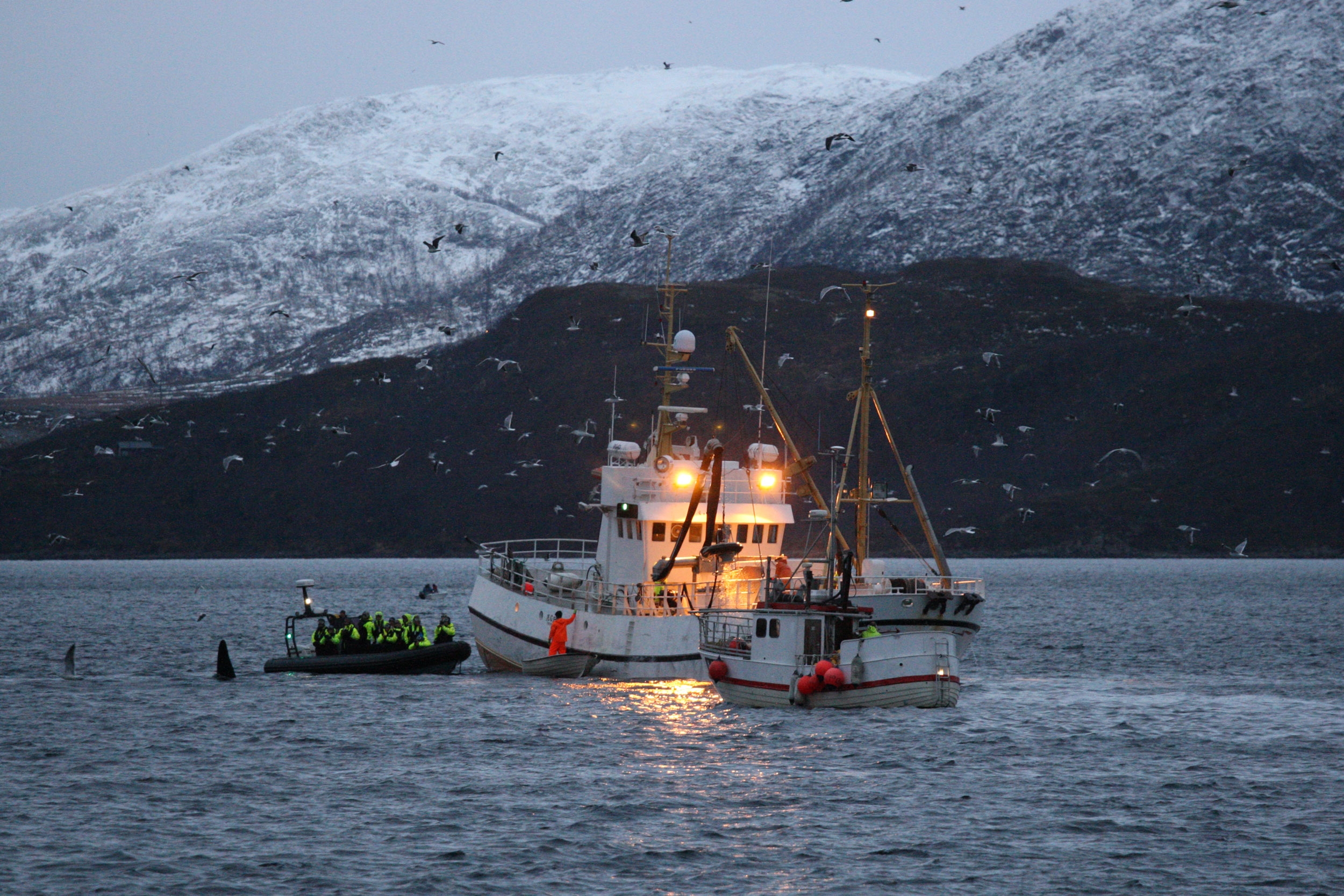
A recent Hawaiian study, published in 2021, found “significant behavioural change” among humpback whales beyond the regulated 91-metre approach distance enforced on all vessels in the bay where the research took place. For their study, the researchers observed the whales from land overlooking Mā‘alaea Bay in Maui and the ocean beyond. They noted that even as the boats followed the codes of conduct, the humpbacks swam faster than usual and took fewer breaths, showing that disturbance is about more than proximity.
The Hawaiian study also showed how humpback whales rely more on hearing than sight. When ships were legally obligated to have their propeller in neutral, the humpbacks showed less indication of disturbance. That finding is, presumably, an endorsement for sailboats and kayaks over operators selling horsepower, a problem highlighted by the chaos in Tromsø and Skjervøy.
Killer whales spend hours together gathering herring through pulsed calls and whistles to each other. The brum, brum, brum of a boat — closer and closer and closer — can mask that communication. And if the boats are many, approaching from all sides in a narrow fjord, they sometimes drive through a pod, which then splits and breaks the trap laid out to hold the herring in place.
But the long-term consequences are hard to measure; female killer whales have a life expectancy of 50 years (some have lived to 90) with five years between pregnancies, which are 15 to 18 months long. Researchers would need to have studied the population for years before the arrival of whale watching to have a baseline for population growth and behaviour.
Whale scientist Ellyne Hamran, who has measured the extent of underwater noise in northern Norway for the German-based marine mammal protection organization Ocean Sounds, says rigid inflatable boats with an outboard engine make a lot of noise for their size. And speed also matters. A better option may be electric whale watching boats — Tromsø already has at least two hybrid-electric ones — which make less noise, especially at low speed, Hamran says. Their relatively large size also means the view from the deck is better than on smaller vessels and better in choppy seas; smaller boats need to go closer to the whales to see past the waves. And, most important, the overall number of passengers is 12 to 18 times that of a small inflatable boat, which may solve the main problem with whale watching in Tromsø beyond the scarcity of daylight: too many boats trying to make a buck.
Researchers have little doubt that noise is stressful for the whales. Studies around the world show how cortisol, the stress hormone, rises in whales, dolphins, sea lions and other marine mammals when humans muck up their daily routines.
The latest data is from a 2022 study on the impact of ecotourism on humpback whales in Western Antarctic Peninsula waters. In 1990, just 6,700 visitors went whale watching on one of 12 vessels operating in the area. Thirty years later, 73,000 visitors had the pick of 62 tourism operators. Researchers compared the cortisol levels in humpback blubber collected over three years beginning in 2019. They found that humpbacks had significantly lower cortisol levels in 2021 — when the industry was paused by COVID-19 and few boats were about, and the whales were free to just be.
Uninvited visitors to the home of whales, seals and dolphins
While most of the whale watching industry wound down for a couple of seasons in response to the pandemic, some outfits limped along catering to a few tourists and locals. Krisztina Balotay witnessed the impact of fewer boats on whales in Tromsø.
She was one of the few guides to remain employed during the 2020–21 season, mostly to film educational videos, and noticed how the whales — killer whales in particular — behaved differently with less traffic. The young would approach the boat, making noise from their blowholes and start watching Balotay and the crew.
Curiosity is part of the predatory makeup of killer whales, demonstrated when they raise their head above water, an act known as spyhopping. Balotay had never seen young killer whales engage this way. “Before, the [mature whales] would protect the family and steer them away from curious sights. But when it was just us, day after day, they learned to recognize our boat as friendly and allow the younger ones to engage,” she says.
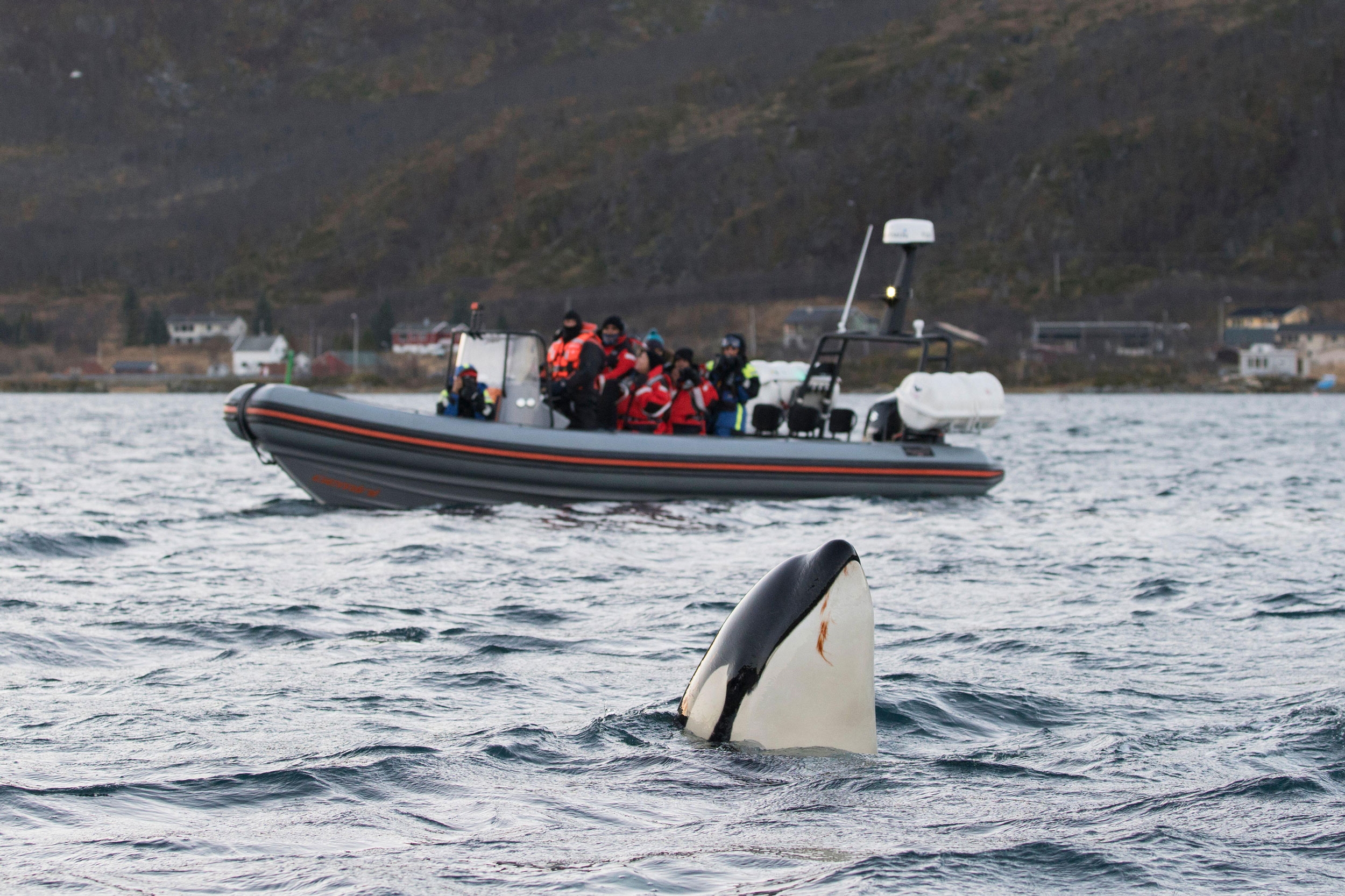
Originally from Hungary, Balotay lived in Tromsø for five years, moving to Skjervøy in winter to keep up with the herring and the whales. Eventually, she changed her zip code to Skjervøy. If the whales were once too close, the Skjervøy location pushed them to their opposite limit.
From the whales’ point of view, the pandemic was only a brief respite from traffic. In November 2021, tourists — probably vaccinated — joined the herring and whales in Skjervøy. Small vessels and bigger ships with indoor seating continued to depart from Tromsø, sailing for four hours just to reach the whales, while other operators moved to Skjervøy, bussing in clients the almost 250-kilometre drive from Tromsø. This level of remoteness could have gone a long way toward slowing the amount of traffic had it not been for that constant time constraint, the lack of daylight. Having few daylight hours for tours concentrates the number of boats out on the water at any given time.
Balotay was back to zigzagging between swimmers and kayaks, and big boats and small boats for a view of the whales. But her tolerance for “this soup of chaos” had changed. She wrote an open letter to her colleagues on the Facebook group Hvaler I Nord (Whales in the North), and the strong reactions it got led the tourism authorities to host the sardine-can town hall, which I attended via video.
I thought I knew what to expect when, two weeks later, I joined the Norwegian touring company Brim Explorer in Tromsø.
Despite a joke Europeans like to repeat — hell is a place where Brits do the cooking, Italians handle planning and Norwegians take care of the entertainment — the Norwegians put on a wonderful side show about coastal life and wildlife in the Arctic on the long journey to Skjervøy. We came to understand we were uninvited visitors to the home of whales, seals and dolphins. No animals were here solely for our enjoyment; SeaWorld is somewhere else. The guides neither hyped nor reduced expectations. They immersed us in a whale’s watery world.
After almost four hours of motoring the 100-kilometre water route from Tromsø to Skjervøy, we see several spouts, humpbacks hard at work, gobbling from an all-you-can-eat herring buffet. Three boats already surround the whales; a rival passenger vessel from Tromsø had beaten us to the spot while the other two likely travelled the short distance from Skjervøy. Local guidelines advise a limit of three boats when encountering “a situation,” and those boats have 30 minutes to show passengers this “situation” while other tours wait in a queue 500 metres away.
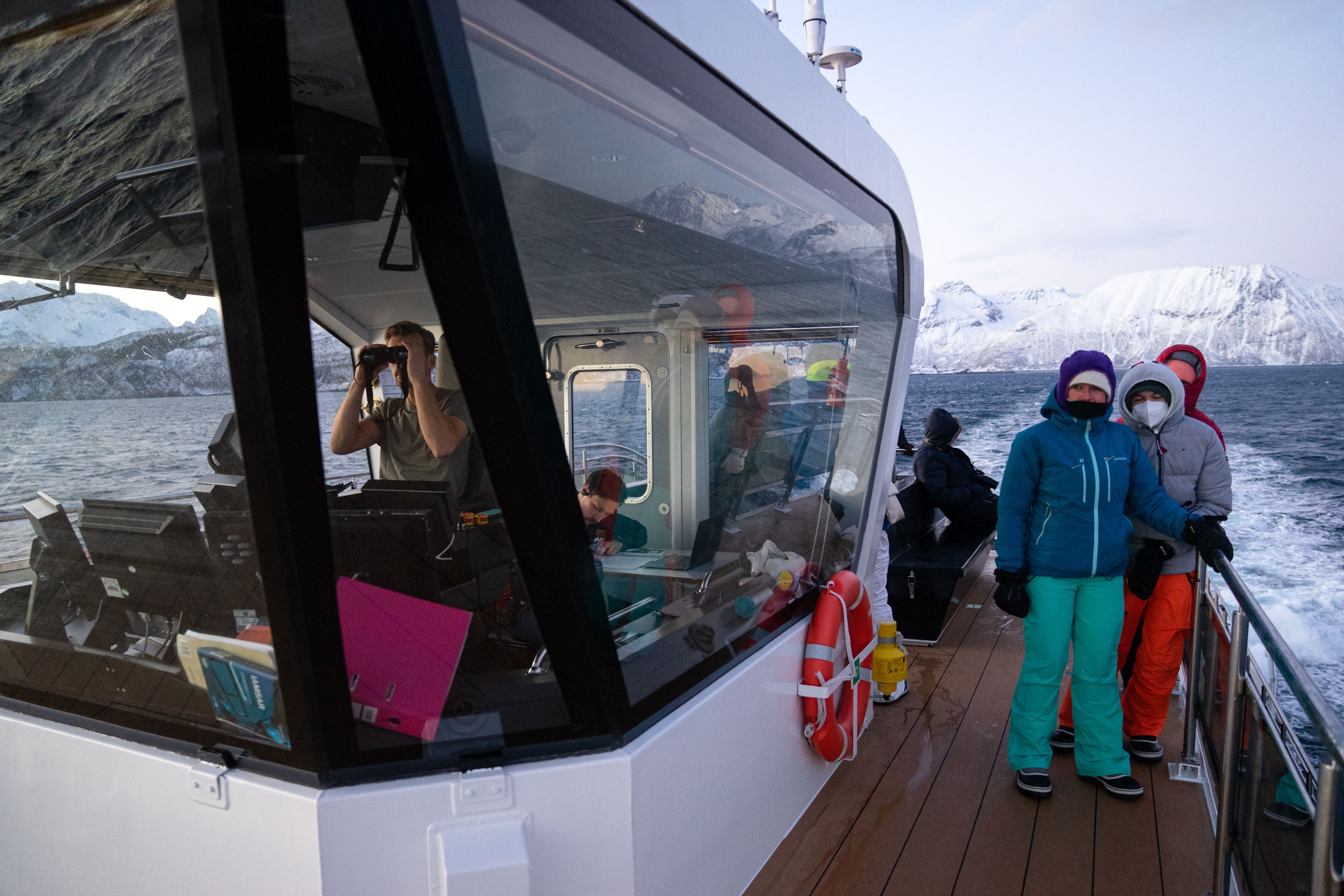
With only an hour left of daylight, on a tour lasting longer than the average workday in Norway, we wait. And wait. And wait. The three boats stay put well past the 30-minute mark. A few killer whales swim closer to our boat, but we never drift nearer than 400 metres from what appears to be a pod of six to eight humpbacks. Lydia Joray, a physician from Switzerland, expected to see more. “This was more like the feeling of whale watching,” she tells me, an impression rather than an experience. Another passenger from Switzerland regrets not taking the hvalsafari with a smaller rigid inflatable boat. I find out later she has booked another tour with one of the smaller boats.
The tour underlines a problem some in Skjervøy and Tromsø want to solve with a licence system that would cap vessel numbers, a practice adopted by the tourism industry in the Azores, about 4,400 kilometres southwest of Tromsø. When the humpbacks migrate north across the Atlantic to their feeding grounds in spring, they pass by the Portuguese archipelago.
The whale watching industry on the Azores has been through a chaotic phase similar to Norway’s. As in many other coastal communities, the industry took off there in the early 1990s about a decade after Portugal complied with the global ban on all commercial whaling, a final blow to Azorean fishers struggling in what was already an unprofitable industry.
Since 2003, no one has been allowed to start a new whale watching company in the Azores without a licence — and there are currently no more available. And authorities can withdraw a coveted licence for bad behaviour or lack of operations. The idea, back then, was to reduce the number of boats, and as an economist would have predicted, today the largest operators are the ones that were on top when the system was introduced.
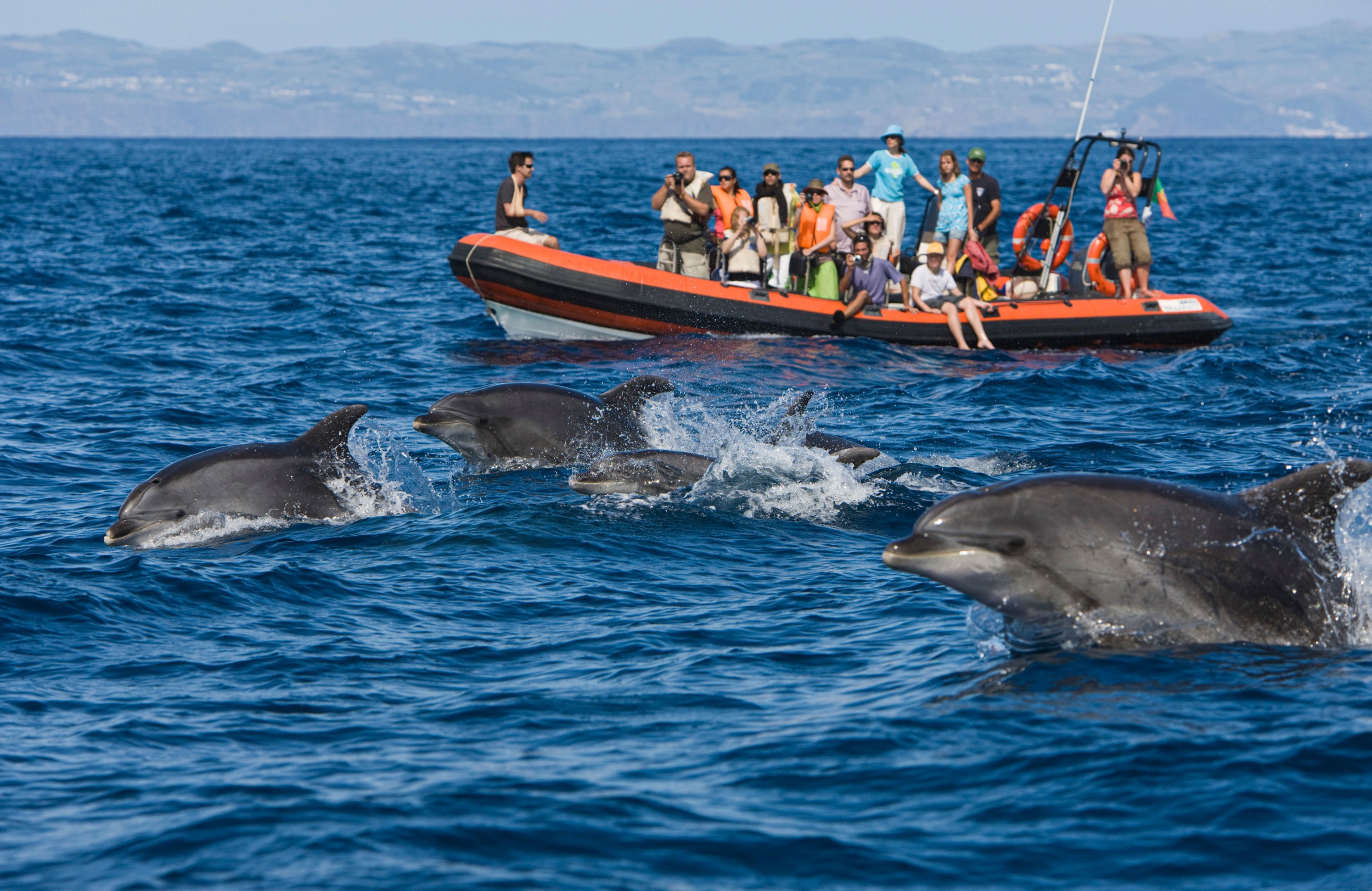
Susana Simião, a former whale watching guide and a senior technician for a government agency working under the Regional Directorate for Maritime Policies in the Azores, says the system can be unfair. Azorean communities late to jump on the opportunity are left out of the industry since no licenses are left. But for the more than 25 species of whales and dolphins found in local waters, and the tourists who come to see them, the quota system is a success.
The goal of each tour, Simião says, is to show passengers a number of species within three hours. If three boats are already hovering around sperm whales, for instance, land-based whale spotters will send boats to another location so no one is left waiting and wasting their time allotment. If boats violate the code of conduct, crew members and passengers can file a report on the tourism inspection website. If a complaint merits an investigation, the authority can question crew and witnesses to determine a penalty. Serial violators will not get their licenses renewed, but so far that’s all hypothetical, according to Simião: “We don’t have much drama.”
Patience, forbearance and soul-searching
The day after my whale watching tour, I go on an hour-long walk to Telegrafbukta, informally known as the Gran Canaria of Tromsø, thanks to a humble strip of fine sand. The path takes me past the city lights, along dark and narrow roads where walking without high-vis gear apparently results in public shaming; a driver zooming by blinks his headlights as if he is communicating with a deer standing too close to the road. Little does he know, I am a tourist on the noble quest of capturing the northern lights in a photograph to show all my friends and the outside world. Little do I know, I should have tagged along with an “aurora hunter.”
Usually, a tourist in Tromsø goes on a northern lights tour with a guide — the aurora hunter — who manages expectations. Success in watching the aurora borealis comes down to luck and patience. At the beach, I sit on a picnic table sticking up out of the snow and wait for the rewards of my effort… for about 10 minutes. I’m hungry and the restaurants in town close early, presumably because people like me eat dinner at 2:00 p.m. The walk was lovely.
Much nature watching requires forbearance, perhaps most famously bird watching, where quiet tenacity is rewarded with joyful moments witnessing a wild bird’s natural behaviour. Success, like aurora hunting, comes down to luck and patience. Why has whale watching become so different?
Erich Hoyt, a research fellow at Whale and Dolphin Conservation in the United Kingdom, wrote the first-ever book on whale watching in 1984. He says the whale watching industry has, frankly, become spoiled. “The customer expects a close view and that is unfortunate,” he says. Much of it has to do with the business mechanism: operators start on the right track, but it’s easy for them to lose enthusiasm for good behaviour if competition hardens. Reversal can mean scaling down the fleet, with financial pain and job losses. Hoyt lists British Columbia’s Salish Sea as a place where a fleet is too big for the space. But other operations may only need distance rules or time and spatial regulations, what Hoyt calls a “one-third space and time” rule, meaning: one-third of each day and one-third of the area is reserved for animals to be left alone. Operators would introduce passengers to a more holistic nature experience, without whales.
To return to the idea of watching whales without disturbing them, Hoyt says, destinations need to collectively encourage a diverse experience and an overall interest in marine life. The best whale watching destinations, he says, foster an interest in whales beyond a single paid tour. In Canada and the United States, for example, whale enthusiasts have created the Whale Trail, a system of walking tours from coastal California to northern British Columbia. Iceland has a museum exhibiting the many “whales you’ll never see,” and in the Azores visitors can view from the watch towers built in the past by whalers to search for prey.
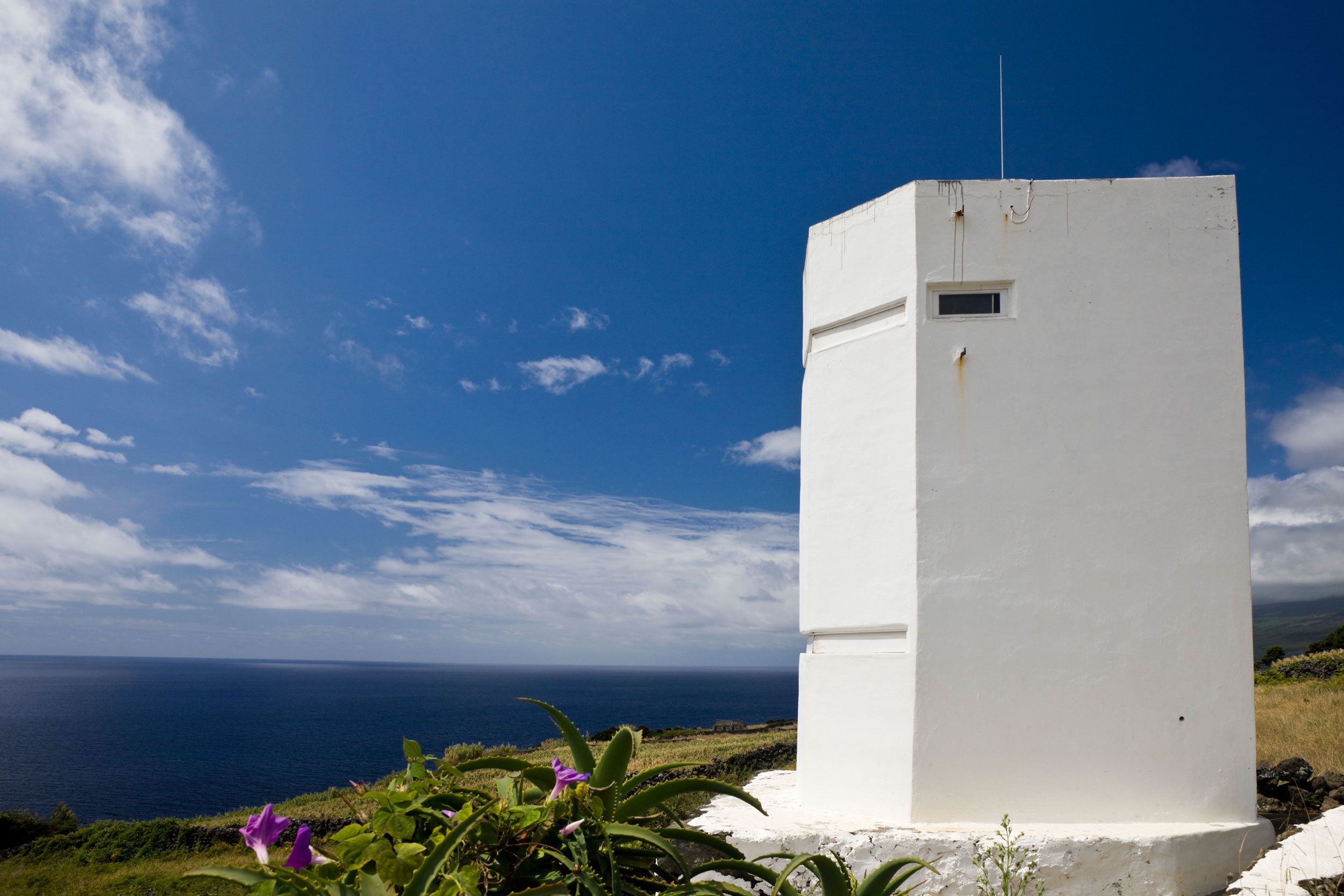
Perhaps the industry needs to have a high-level soul-searching conversation among themselves about the right way to watch whales. At a minimum, each whale watching region can insist that all operators have a confab at the beginning and end of each season. “A starting point is getting [operators and guides] in one room,” Hoyt says. It can be as simple as the end-of-season Naming of Whales Party held by whale watching operators in Provincetown in Cape Cod, Massachusetts, where guides come together to share information, identify whales and talk about how to co-operate in the next season for the betterment of the industry.
Whales benefit from our love. In just two decades, the industry of meeting them in the wild has grown enormously, raising the profile of the most commonly seen species by showing them everywhere from news coverage to children’s books. Many have become icons of a specific destination, all in less than the life span of a humpback whale. In Iceland, one of three nations that still practices commercial hunting of minke whales, the popularity of whale watching in the capital Reykjavík led the government to draw a no-go zone for whaling ships. Whale hunters had to sail farther and farther out, squeezing the profit margins to exhaustion. In 2018, the minke whale industry went out of business.
In October 2022, when daylight hours were shrinking by eight and a half minutes each day in the village of Skjervøy, Balotay was preparing for another season, her ninth since the industry took off in northern Norway. “It will be different this year,” she told me then, pointing to comments in the press from the Directorate of Fisheries about regular patrolling of whale watching waters. She brushed off any concerns and kept to the positives: bookings for the season were fantastic.
By late January 2023, daylight hours are growing 13 minutes each day and Balotay is finishing the season, a good one, she says: it was different this year, busy but less chaotic. The herring, fishing boats, whales and whale watchers all arrived and no human or animal came to a grisly end.
Still, how pleased were the whales? What cost do animals bear in our crazy need for a wild encounter? ![]()
Read more: Local Economy, Travel


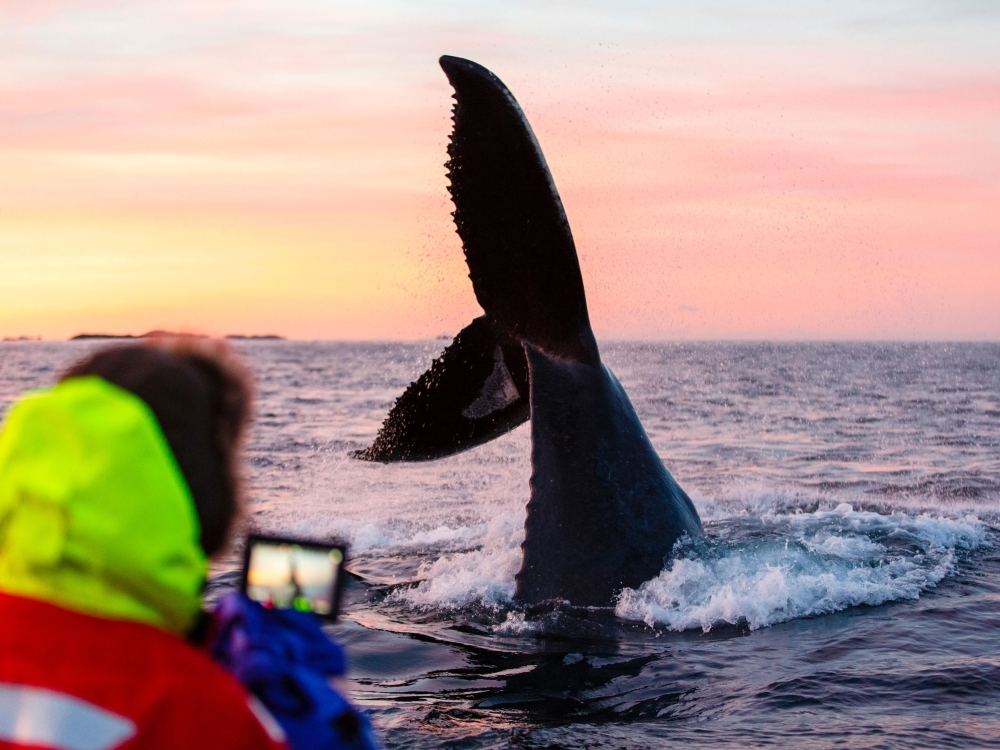












Tyee Commenting Guidelines
Comments that violate guidelines risk being deleted, and violations may result in a temporary or permanent user ban. Maintain the spirit of good conversation to stay in the discussion.
*Please note The Tyee is not a forum for spreading misinformation about COVID-19, denying its existence or minimizing its risk to public health.
Do:
Do not: